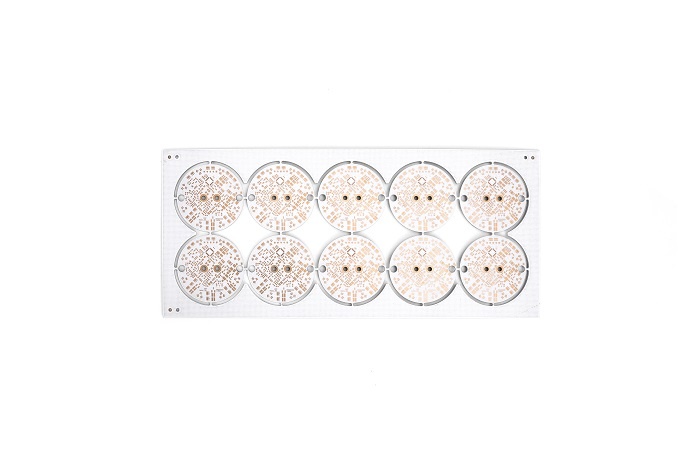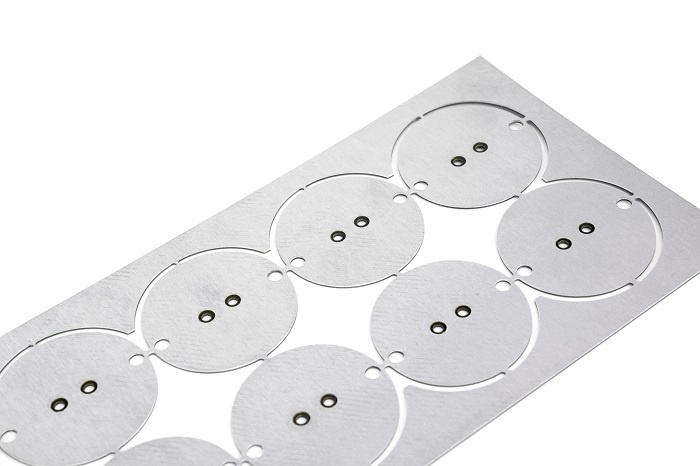What Are the Advantages of Metal Core PCB? How to Choose?
- Views
- 19 Apr 2024
In the daily production practice of current SMT manufacturers, the material selection of PCB circuit boards is crucial, of which FR-4 sheets and metal substrates are the two most common types. Although FR-4 dominates due to its wide applicability and mature technology, metal core PCB boards play an indispensable role in specific fields due to their unique properties, especially in LED products and other high-end products. In electronic products with high power and high heat dissipation requirements.

What are the advantages of Metal core PCB?
Enhanced reliability: Metal core PCB shows significant advantages in many product designs that generate very large amounts of heat or require high heat dissipation efficiency. Aluminum substrates or copper substrates can effectively withstand the effects of high temperatures and conduct heat quickly, thereby extending the service life of the product, ensuring the stability and durability of the product's operation, and improving the overall quality of the product.
Excellent heat dissipation performance: LED products generate a large amount of heat energy during the conversion of electrical energy into light energy. Conventional epoxy resin boards may not be able to withstand long-term high-temperature operations, resulting in a decline in quality. However, because of its internal metal structure, Metal core printed circuit board can achieve efficient heat dissipation and transfer the accumulated energy from one surface to another, effectively solving the problem of excessive temperature.
Strong high-temperature adaptability: Compared with FR-4 technology, metal-based PCB can maintain excellent working performance in high-temperature environments and has ultra-high heat resistance, making it suitable for various high-temperature application scenarios.
Lightweight design: Metal core PCB usually uses aluminum PCB or copper PCB as the basic material. These two metals have excellent ductility and rigidity. When they are made into PCB boards, they are thin and strong, reducing the weight of the product. , and also improves the damage resistance of the product during use.
High-density LED layout: Taking advantage of the excellent conductivity of Metal core PCB, designers can densely lay out light source components to achieve higher-performance LED lighting effects.

How to choose between Metal core PCB and FR-4 materials?
Thermal conductivity comparison: The thermal conductivity of FR-4 is only 0.3 watts, which is much lower than the thermal conductivity of Metal core PCB. The thermal conductivity of metal bases ranges from 1 watt to 4 watts, which means that in applications requiring high heat dissipation, Metal core PCB is more suitable.
Difference in thickness and structure: As far as thickness is concerned, FR-4 offers more thickness as it has many layers. Metal core PCB is thinner.
Heat dissipation treatment: In terms of heat dissipation, Metal core PCB shows obvious advantages and can achieve good heat dissipation effect without other treatment methods. FR-4 often requires special consideration in heat dissipation design during drilling and other processing steps.
Characteristics of the solder mask layer: The color of the solder mask layer is also a point of difference: FR-4 mostly uses red and green colors to cover the top and bottom layers respectively, while Metal core PCB usually uses a white solder mask layer, covering only the top.

To sum up, Metal core PCB has shown irreplaceable value in high-power application fields such as high-voltage stabilizers, power modules, and automotive electronic equipment. With the continuous improvement of environmental protection awareness and technological progress, from the perspective of practical application of SMT patch processing, if the environmental pressure increases in the future, Metal core printed circuit board is likely to become the mainstream trend of industry development due to its high efficiency and thermal conductivity. At the same time, during the PCBA prototyping and mass production stages, Best Technology manufacturers select the most suitable board type for customers based on their specific needs.
Metal Core PCB, MC printed circuit board, metal-based PCB,
Related Blog
- What is Thermal and Electrical Separating Pad in Metal Core PCB?
- LED PCB Assembly Process: Step-by-Step Guide for Beginners
- Why Always Recommend White Solder Mask Black Silkscreen for Aluminum PCB?
- What Materials Are Commonly Used for Manufacturing Lighting PCBs?
- Everything You Should Know About Metal Core Circuit Board
- What Are the Differences Between Ceramic PCB, Metal Core PCB And Standard FR4 PCB?
- Why Choose Best Technology As Your MCPCB Manufacturer?
- What is LED Light Circuit Board and How to Make it?
- When is International Labour Day in 2024 and What are the Significances of It?
- How Does A Convexity Comes Out On Thermoelectric Separation Copper Based PCB?
- Why is Aluminum LED PCB Important for Indoor Growth Lights?
- Application of Metal Core Pcbs in the Development of LED Technology
- Why Choose White Solder Mask for Metal core PCB When Used In LED Devices?
- Understanding Aluminum LED PCBs in 1000w LED Grow Lights
- What Are the Advantages of Metal Core PCB? How to Choose?
- Automotive Light Copper Core Pcb Production Process—testing
- Why Are Metal Core PCBs, Especially Copper Core, Used In Heat-Sensitive Electronics?
- How do aluminum LED PCBs improve LED efficiency?
- What Are the Differences Between Regular and Thermoelectric Separation Copper-Base PCBs?
- Aluminum PCB VS FR-4 Performance Comparison



